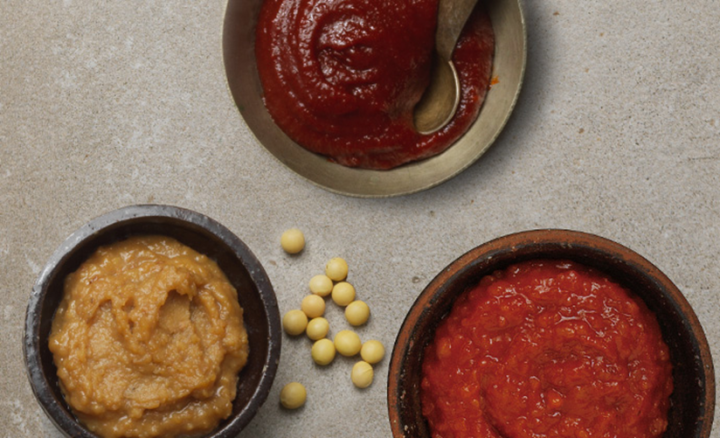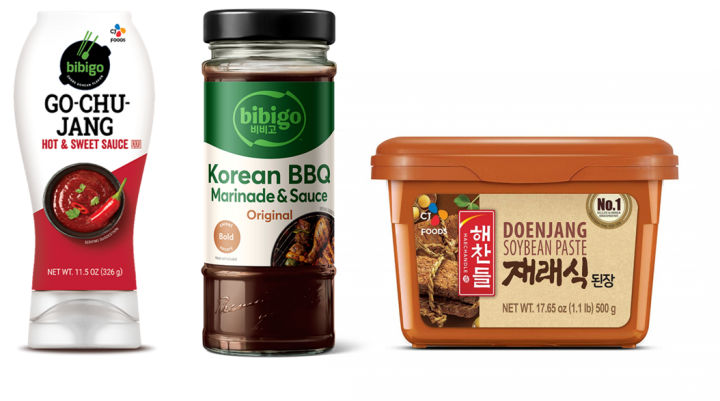Chuseok, one of the two biggest national holidays in Korea, is the perfect time to incorporate ‘jang’ into your cooking
With the Korean harvest festival known as Chuseok just around the corner, most families are busy prepping for the big dinner and other meals for the three-day holiday. Chuseok is one of the two main holidays in Korea along with Seollal, the Lunar New Year.
At the center of Korean cuisine is ‘jang’ – a family of traditional fermented condiments that serves as the basis for most, if not all, Korean dishes. The pastes are used to add what Koreans describe as ‘gamchilmat,’ a savory taste which is considered the fifth basic taste alongside sweet, sour, salty, and bitter.
In this feature article, let’s delve deep into the flavor profiles of a few recipes for a Chuseok dinner incorporating ‘jang.’
Putting the jang in doenjang
Even though you may not have heard of the word jang on its own, you’ve probably heard of it used as a form of suffix to the names of other pastes and sauces you can purchase at Korean grocery stores.
The three main types of jang are:
- Ganjang: Soy sauce
- Doenjang: Fermented soybean paste
- Gochujang: Fermented Korean red chili pepper paste
All three are used as condiments, as well as for seasoning and marinating.

But the use of different types of jang is not limited to the big holidays as it is an integral part of simpler dishes, such as using gochujang as a sauce for bibimbap, using ganjang as the base for a marinade for bulgogi and doenjang as the base for the namesake stew doenjang jjigae.
Last year, the total export of gochujang from Korea to the world reached a record high of 62 million USD, according to the Korea Customs Service. The country exported a total of 384 million USD worth of Korean pastes and sauces, with the United States being the biggest importer.
Traditional yet customized
CJ Foods adjusted the level of spiciness and sweetness of its K-pastes and sauces for each market and its customers’ preferences.
The company has a line-up of traditional condiments that are well-received in the U.S. In addition to the better-known condiments gochujang and doenjang mentioned earlier, ssamjang is also rapidly gaining popularity as more people get exposure to the item through K-bbq. It’s a mixture of doenjang and gochujang, with a drizzle of sesame oil, minced garlic and onion, green onions, and topped with toasted sesame seeds.

Bring Korea to your kitchen using CJ Foods’ K-Sauces and Pastes
Bulgogi is marinated beef or pork that can be either grilled or stir-fried. Thinly sliced meat is marinated typically overnight in a mixture of soy sauce, sugar, toasted sesame oil, garlic and other seasonings before cooking. With CJ Foods’ bibigo BBQ Sauce Original, you can go straight to marinating the meat without the hassle of measuring the different ingredients for the marinade.
Another meat-lovers’ favorite is Galbi-jjim. The Korean braised short rib dish is made by simmering beef short ribs in a savory-sweet sauce with soy sauce, sugar, garlic, and vegetables until tender. The bibigo BBQ Sauce Original can also be used in this dish as well.
The same sauce can also be used in noodle dishes as well, most notably in Japchae. The glass noodle dish is made by sautéing Korean sweet potato noodles with vegetables, beef, and a savory-sweet sauce that’s made with soy sauce, sugar and sesame oil.
You could also try Toran Doenjang Guk, a comforting and flavorful soup made from taro. Start by dissolving CJ Foods’ Doenjang paste in a pot of water or broth, then bringing it to a simmer. Add sliced taro, mushrooms, and tofu, cooking until the vegetables are tender and the flavors meld together.

During this Chuseok, elevate your home-cooked meals with CJ’s K-Sauces whether you are making authentic, traditional Korean dishes or adding a touch of Korean taste to your everyday recipes.
CJ’s wide range of jangs, including savory soy sauce, spicy gochujang, and rich ssamjang, offer the perfect blend of authenticity and convenience. We are sure the rich and deep flavors will help strengthen the bond you cherish with the people closest to you during this season of giving thanks.











